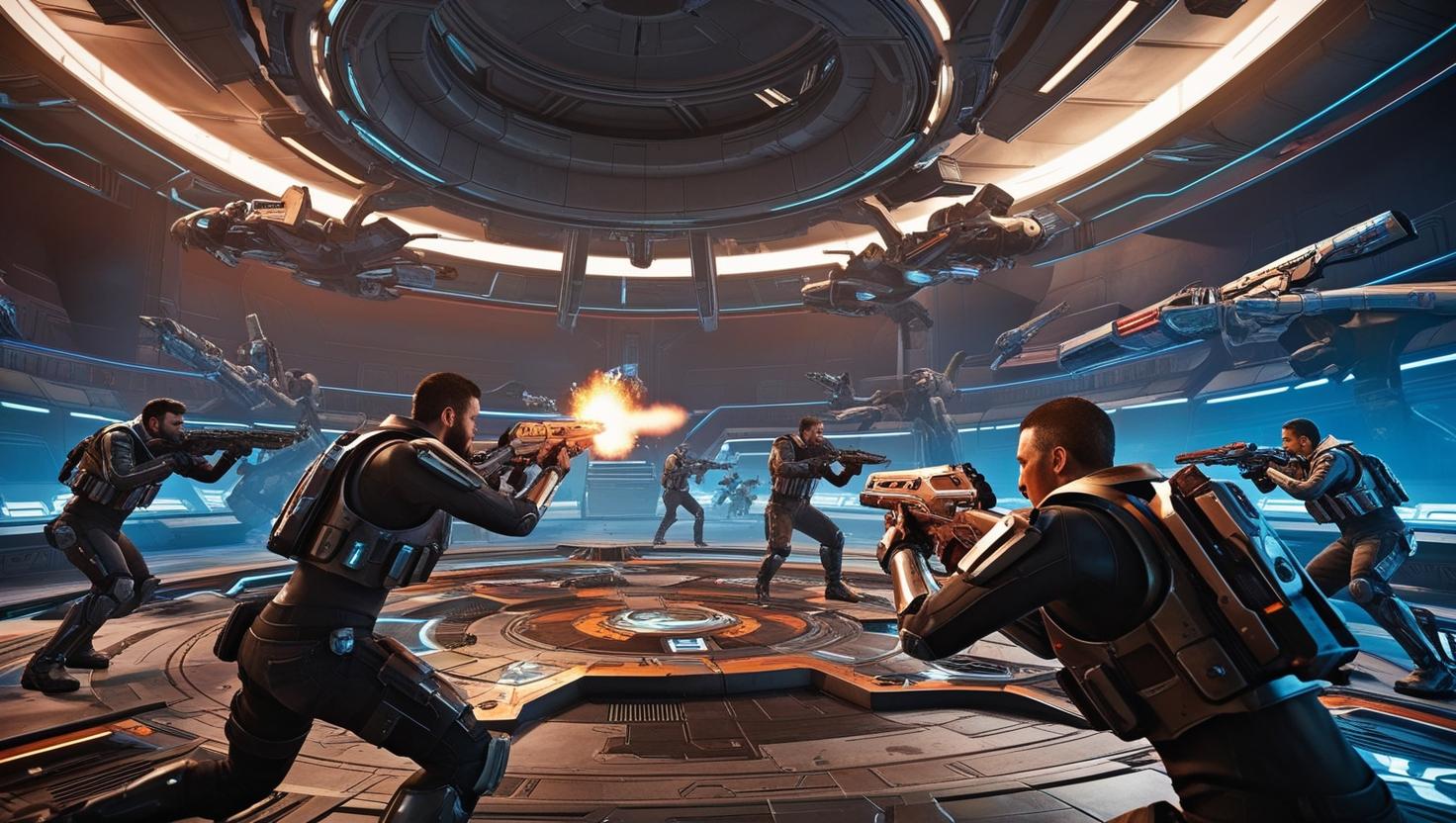Procedural Animation in Games: The Future of Dynamic Movement
In the ever-evolving landscape of game development, procedural animation stands as a revolutionary technique that has transformed how characters and objects move within virtual worlds. Unlike traditional animation methods that rely on pre-recorded sequences, procedural animation generates movement algorithmically in real-time, creating dynamic, responsive, and unique motions. This approach has become increasingly important for developers seeking to create more immersive and realistic gaming experiences.
What Is Procedural Animation?
At its core, procedural animation is a method where character movements are generated mathematically rather than being manually animated frame by frame. Instead of playing back pre-defined animation cycles, procedural systems calculate how a character should move based on various inputs and environmental factors.
The fundamental difference lies in how the animation is created:
- Traditional animation: Artists create specific movements for specific scenarios, which are then triggered when needed.
- Procedural animation: Rules and algorithms determine how characters move in response to the environment and player input.
This distinction means that procedural animations can adapt to unexpected situations, creating movements that weren’t explicitly programmed but emerge naturally from the underlying system.
The Evolution of Game Animation
Game animation has undergone a remarkable transformation since the early days of gaming:
- Sprite-based animation (1970s-80s): Simple frame-by-frame animations with limited frames
- Motion capture (1990s-2000s): Recording human movements for more realistic character animation
- Blended animations (2000s-2010s): Smoothly transitioning between different pre-made animations
- Procedural animation (2010s-present): Generating animations dynamically based on physics and algorithms
This evolution represents a shift from static, predefined movements to dynamic, responsive systems that can handle infinite variations of movement.
Why Procedural Animation Matters
For Players
Procedural animation significantly enhances the gaming experience by making virtual worlds feel more alive and responsive. When characters interact naturally with uneven terrain, react realistically to being pushed or hit, or adapt their movements based on carrying different items, the result is a more immersive experience.
The unpredictability of procedural animation also means that the same scenario can play out differently each time, keeping gameplay fresh and engaging even after multiple playthroughs.
For Developers
From a development perspective, procedural animation offers several compelling advantages:
- Resource efficiency: Reduces the need for storing thousands of animation sequences
- Adaptability: Characters can navigate complex, changing environments without custom animations for every scenario
- Realistic responses: Enables realistic reactions to physics-based interactions
- Time savings: Once the system is set up, it can generate countless variations without additional animation work
Notable Examples in Gaming
Procedural animation has been implemented in various ways across different games, each showcasing unique applications of this technology:
Spore (2008)
One of the earliest mainstream games to heavily utilize procedural animation. The game allowed players to create creatures with different body structures, and the animation system would automatically generate appropriate walking, running, and interaction animations based on the creature’s physiology.
Grand Theft Auto V (2013)
Uses a system called Euphoria, which blends traditional animations with procedural techniques. Characters react realistically when shot, pushed, or otherwise interacted with, creating unique and believable physical responses.
The Legend of Zelda: Breath of the Wild (2017)
Implements procedural animation for environmental interactions. Link’s movements adapt to the terrain he’s traversing, whether climbing uneven surfaces or maintaining balance on slippery slopes.
Death Stranding (2019)
Features a sophisticated procedural animation system that calculates how the protagonist Sam Bridges moves based on terrain, the weight he’s carrying, and his balance. Players must actively manage their balance while traversing difficult terrain.
Spider-Man (2018)
Uses procedural techniques to generate Spider-Man’s web-swinging animations, creating natural arcs and movements that respond to the buildings and environment around him.
The Technical Side: How It Works
While the concept of procedural animation might seem complex, the underlying principles are relatively straightforward:
Inverse Kinematics (IK)
This mathematical process calculates joint movements based on the desired position of end points. For example, if a character needs to place their hand on a surface, IK determines how the shoulder, elbow, and wrist should rotate to achieve that position.
Ragdoll Physics
This simulation treats the character’s body as a collection of connected rigid bodies constrained by joints. When external forces are applied, the body parts move realistically according to physics rules.
Procedural Blending
This technique mixes procedural and traditional animations to get the best of both worlds—the control and precision of hand-crafted animations with the adaptability of procedural systems.
Dynamic Motion Synthesis
These advanced systems use machine learning and real-time calculations to generate completely new animations based on the character’s state and environment.
Procedural Animation and Sci-Fi Games
For sci-fi game developers like 24-Players, procedural animation offers particularly exciting possibilities:
Alien Life Forms
Creating believable movement for creatures with non-humanoid anatomy becomes significantly easier with procedural animation. Whether it’s a six-legged insectoid species or a floating gas-based entity, procedural systems can generate appropriate movements based on the creature’s physiology.
Zero-Gravity Environments
Simulating realistic movement in space environments presents unique challenges that procedural animation is well-suited to address. Characters can naturally react to the absence of gravity, propulsion forces, and momentum in ways that would be difficult to pre-animate.
Adaptive AI Behavior
Procedural animation can make AI-controlled characters more believable by having them physically react to the environment and situations in realistic ways, making alien NPCs feel more “alive” and less scripted.
Dynamic Terrain Interaction
On alien worlds with unusual terrain features, procedural animation allows characters to adapt their movement style to whatever surface they encounter—whether it’s low gravity lunar dust, high-friction magnetic fields, or unstable crystalline structures.
Challenges and Limitations
Despite its advantages, procedural animation isn’t without challenges:
- Computational cost: Complex procedural systems require significant processing power
- Control vs. realism: Finding the right balance between realistic physics and responsive gameplay
- Edge cases: Unexpected situations can sometimes cause bizarre animation glitches
- Learning curve: Implementing procedural animation systems requires specialized technical knowledge
The Future of Procedural Animation
As technology continues to advance, we can expect procedural animation to become even more sophisticated:
- Machine learning integration: AI systems that learn and evolve animation patterns based on player behavior
- Increased environmental awareness: Characters that understand and interact with more complex environmental elements
- Emotional procedural systems: Animations that adapt not just to physics but to character emotions and mental states
- Hybrid systems: More seamless blending between traditional and procedural animation techniques
Getting Started with Procedural Animation
For developers interested in implementing procedural animation, several approaches are available:
- Start small: Begin by adding procedural elements to specific character features, like head-tracking or hand placement
- Leverage existing tools: Many game engines now include basic procedural animation tools
- Study the fundamentals: Understanding physics and animation principles is crucial
- Analyze successful implementations: Study how other games have effectively used procedural techniques
Conclusion
Procedural animation represents a significant step forward in creating more immersive, dynamic, and believable game worlds. For sci-fi game developers like 24-Players, it offers unprecedented opportunities to bring alien worlds and creatures to life with realistic, adaptive movement.
As processing power increases and techniques become more refined, we can expect procedural animation to become an even more integral part of game development, pushing the boundaries of what’s possible in virtual environments.
Whether you’re developing the next groundbreaking sci-fi adventure or simply looking to add more dynamism to character movements, procedural animation provides tools and techniques that can elevate your game to new heights of realism and interactivity.
This article was published by 24-Players, a science fiction game development studio dedicated to creating immersive gaming experiences through innovative technology.


Leave a Reply